 Skype has teamed up with The Cloud – Europe’s leading Wi-Fi network provider – to offer low cost Wi-Fi access and Internet voice calls at 6,000 of The Cloud’s hotspots in the UK and Sweden.
Skype has teamed up with The Cloud – Europe’s leading Wi-Fi network provider – to offer low cost Wi-Fi access and Internet voice calls at 6,000 of The Cloud’s hotspots in the UK and Sweden.
The partnership forms part of Skype’s world domination plans as the global roll-out of their new ‘Skype Zones’ beta service gathers speed.
This lets Skype users make calls and access program features at cheap rates at thousands of hotspots across the world.
Skype are currently notching up more partners than Casanova after a gallon of oysters, having announced a deal with Ready To Surf network back in March, covering over 350 Internet locations across the UK.
 Skype users ambling into a Cloud hotspot will be connected to the service as soon as they flip out their Wi-Fi enabled device.
Skype users ambling into a Cloud hotspot will be connected to the service as soon as they flip out their Wi-Fi enabled device.
Once connected, they will be able to instant message for free over Skype, without needing to log on to Skype Zones.
Unlike the Broadband service, users will have to shell out if they want to get yapping over VoIP, with the Skype Zones service costing for €6.18 (~£4.25, ~$7.40) per month for subscribers or €2.50 (~£1.72, ~$3) for a 2-hour connection.
“We believe that the mobility offered by Skype Zones and has the power to revolutionise modern communications,” purred Niklas Zennström, CEO and founder of Skype.
 “Skype is bringing affordable Wi-Fi and voice calls to millions of users, enabling them to talk, IM and surf conveniently and cost-effectively from thousands of great locations. Our users in the UK and Sweden will benefit from The Cloud’s extensive network coverage in places where people really want to use it.”
“Skype is bringing affordable Wi-Fi and voice calls to millions of users, enabling them to talk, IM and surf conveniently and cost-effectively from thousands of great locations. Our users in the UK and Sweden will benefit from The Cloud’s extensive network coverage in places where people really want to use it.”
George Polk, founder and CEO of The Cloud joined in with the backslapping: “Skype is the global leader in easy to use, superior quality Internet telephony, and we are very excited to be part of their ground-breaking Wi-Fi roll-out. Skype has become mission critical for its millions of users, and we are looking forward to seeing this new service drive traffic in our vast range of sites.”
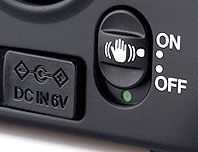 Konica Minolta and Sony Corporation have reached an agreement to jointly develop digital Single Lens Reflex (dSLR) cameras.
Konica Minolta and Sony Corporation have reached an agreement to jointly develop digital Single Lens Reflex (dSLR) cameras.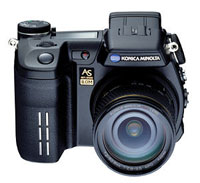 With Sony bringing their award-winning design expertise to the party – and their image sensor, image processing and battery technologies – we can expect some smarty-pants new product design to emerge from the partnership.
With Sony bringing their award-winning design expertise to the party – and their image sensor, image processing and battery technologies – we can expect some smarty-pants new product design to emerge from the partnership.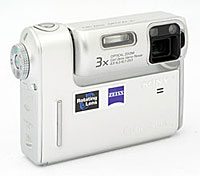 As prices of dSLR’s plummeted, the writing was on the wall for high-end fixed-lens models, so Sony’s move into the dSLR market was not unexpected.
As prices of dSLR’s plummeted, the writing was on the wall for high-end fixed-lens models, so Sony’s move into the dSLR market was not unexpected.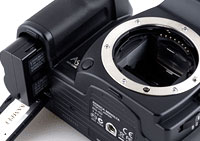 “Sony has powerful devices and technologies essential for digital cameras,” praised Tsuyoshi Miyachi, President and CEO of Konica Minolta Photo Imaging. “I am extremely excited to work with Sony. Together with Sony, we will endeavour to create new value in the field of imaging through increasing attractiveness of digital SLR cameras where we are strongly focused.”
“Sony has powerful devices and technologies essential for digital cameras,” praised Tsuyoshi Miyachi, President and CEO of Konica Minolta Photo Imaging. “I am extremely excited to work with Sony. Together with Sony, we will endeavour to create new value in the field of imaging through increasing attractiveness of digital SLR cameras where we are strongly focused.” KidsOK, a tracking service that lets parents locate their child using a mobile phone, has gone on sale in the UK today,
KidsOK, a tracking service that lets parents locate their child using a mobile phone, has gone on sale in the UK today,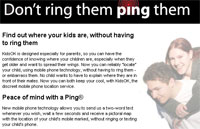 The bit that may strike fear into parents trying to foist these phones on their offspring is that fact that kids have to opt in to the KidsOK service and they can turn off the service any time they like.
The bit that may strike fear into parents trying to foist these phones on their offspring is that fact that kids have to opt in to the KidsOK service and they can turn off the service any time they like.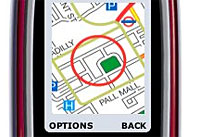 Larger families can enable further handsets on payment of £4.95 p.a. per handset (~US$8.75, ~€7.25). Further ‘pings’ are purchased in bundles of 20 from KidsOK for £9.95 (~US$17.5, ~€14.5).
Larger families can enable further handsets on payment of £4.95 p.a. per handset (~US$8.75, ~€7.25). Further ‘pings’ are purchased in bundles of 20 from KidsOK for £9.95 (~US$17.5, ~€14.5).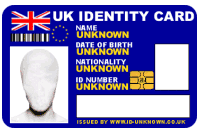 In an initiative led by the Finnish Population Register (VRK), a department of the Finnish Ministry of the Interior, mobile specialist SmartTrust is helping mobile users in Finland to securely identify themselves and sign for goods and services across a range of public and private sector providers using just their mobile phone.
In an initiative led by the Finnish Population Register (VRK), a department of the Finnish Ministry of the Interior, mobile specialist SmartTrust is helping mobile users in Finland to securely identify themselves and sign for goods and services across a range of public and private sector providers using just their mobile phone. “The mobile phone and SIM card have, by default, become the world’s most pervasive smart card / card reader combination,” explains Paul Cuss, CEO of SmartTrust. “Unlike the existing credit-card sized ID cards that Finns carry around in their wallets, the SIM-based certificates do not require the user to be present when authenticating himself via an independent card reader. In this instance, the handset acts as the card reader, requesting the user to authenticate himself through a PIN code request, and sends an electronic digital signature to the service provider.”
“The mobile phone and SIM card have, by default, become the world’s most pervasive smart card / card reader combination,” explains Paul Cuss, CEO of SmartTrust. “Unlike the existing credit-card sized ID cards that Finns carry around in their wallets, the SIM-based certificates do not require the user to be present when authenticating himself via an independent card reader. In this instance, the handset acts as the card reader, requesting the user to authenticate himself through a PIN code request, and sends an electronic digital signature to the service provider.”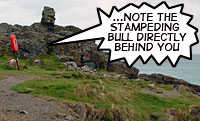 The BBC has teamed up with Hewlett-Packard Labs and Gavitec to provide a digital collaboration based around the BBC TWO series, Coast.
The BBC has teamed up with Hewlett-Packard Labs and Gavitec to provide a digital collaboration based around the BBC TWO series, Coast.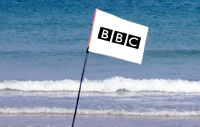 For phone-allergic types, the BBC will also make MP3 audio from the project available as a free download from bbc.co.uk.
For phone-allergic types, the BBC will also make MP3 audio from the project available as a free download from bbc.co.uk.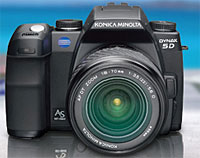 It wasn’t that long ago that digital dSLRs were the sole preserve of well-heeled enthusiasts and the pestering paparazzi, but with prices continuing to fall, digital dSLRs are coming within the reach of the mainstream.
It wasn’t that long ago that digital dSLRs were the sole preserve of well-heeled enthusiasts and the pestering paparazzi, but with prices continuing to fall, digital dSLRs are coming within the reach of the mainstream.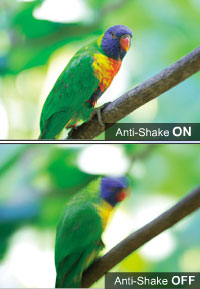 In February this year, Canon returned with its cheaper-faster-more featured next generation 8 megapixel camera, the EOS350D (Digital Rebel XT) retailing for US$880 (~£503, ~€728) while Nikon’s similarly priced D50 was introduced in April.
In February this year, Canon returned with its cheaper-faster-more featured next generation 8 megapixel camera, the EOS350D (Digital Rebel XT) retailing for US$880 (~£503, ~€728) while Nikon’s similarly priced D50 was introduced in April.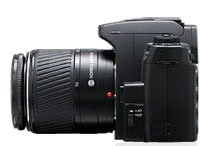 The rest of the specs of the camera are impressive but not cutting edge: 6.1 megapixel sensor, JPEG and RAW image capture (RAW: 3 fps, up to 5 frames), white-balance bracketing, 100-3200 ISO, built-in pop flash and USB 2.0.
The rest of the specs of the camera are impressive but not cutting edge: 6.1 megapixel sensor, JPEG and RAW image capture (RAW: 3 fps, up to 5 frames), white-balance bracketing, 100-3200 ISO, built-in pop flash and USB 2.0.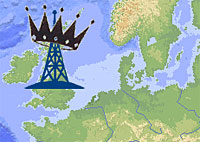 A report from consultancy firm BroadGroup has revealed that the deployment of wireless hotspots in Europe have soared by 67 percent in the six months up to May 2005.
A report from consultancy firm BroadGroup has revealed that the deployment of wireless hotspots in Europe have soared by 67 percent in the six months up to May 2005.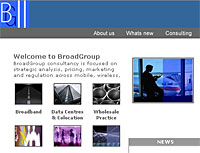 As many a disgruntled transatlantic traveller may tell you, Wi-Fi access in Europe still remains considerably more pricey than the US market, although the report suggests that “price declines are continuing to trend downwards” (I think this means, “prices are going down”).
As many a disgruntled transatlantic traveller may tell you, Wi-Fi access in Europe still remains considerably more pricey than the US market, although the report suggests that “price declines are continuing to trend downwards” (I think this means, “prices are going down”).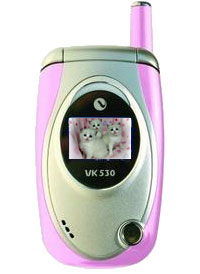 With a survey that could be described as pointless fluff at best and patronising drivel at worst, Vodafone D2 have trotted out the details of their ‘Women and Mobile Phones’ market research survey.
With a survey that could be described as pointless fluff at best and patronising drivel at worst, Vodafone D2 have trotted out the details of their ‘Women and Mobile Phones’ market research survey.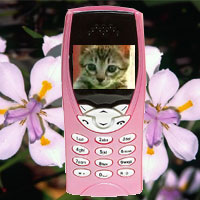 Neatly half of women use the camera on their phone with 37 percent of respondents citing the provision of Bluetooth for wireless data transfer as important.
Neatly half of women use the camera on their phone with 37 percent of respondents citing the provision of Bluetooth for wireless data transfer as important.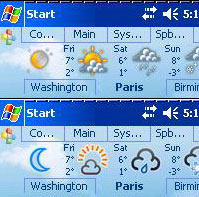 For travelling PocketPC users unsure whether to pack away a brolly or load up with the sunscreen lotion, Spb Weather could prove to be an essential tool.
For travelling PocketPC users unsure whether to pack away a brolly or load up with the sunscreen lotion, Spb Weather could prove to be an essential tool.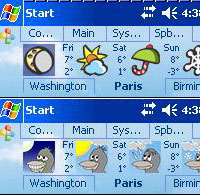 Once installed, it’s simply a case of choosing the cities you want displayed (you can manually add unlisted locations), and then having a fiddle about with all the fun display options lurking in the options dialog.
Once installed, it’s simply a case of choosing the cities you want displayed (you can manually add unlisted locations), and then having a fiddle about with all the fun display options lurking in the options dialog.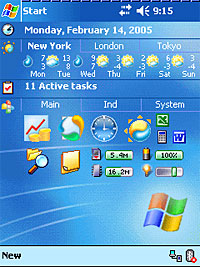 For travellers, tourists and stay-at-homers with a passing interest in the weather, this is a handy, fun application that adds real value to a Pocket PC. Recommended.
For travellers, tourists and stay-at-homers with a passing interest in the weather, this is a handy, fun application that adds real value to a Pocket PC. Recommended.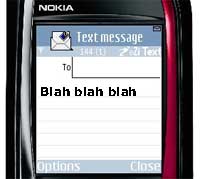 Us in UK-land have long been fans of SMS messaging, with button-pushing Brits banging out 3 million text messages every hour, with 2.5 billions text being sent in January 2005 alone.
Us in UK-land have long been fans of SMS messaging, with button-pushing Brits banging out 3 million text messages every hour, with 2.5 billions text being sent in January 2005 alone.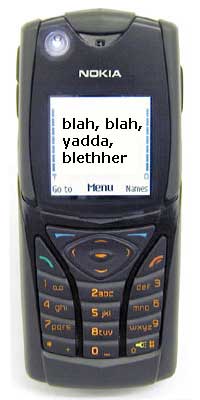 GSM operator T-Mobile was particularly chuffed with its performance as its customers belted out a total of 3.6 billion messages during Q1 2005 – that works out at around 67 texts per subscription per month.
GSM operator T-Mobile was particularly chuffed with its performance as its customers belted out a total of 3.6 billion messages during Q1 2005 – that works out at around 67 texts per subscription per month.